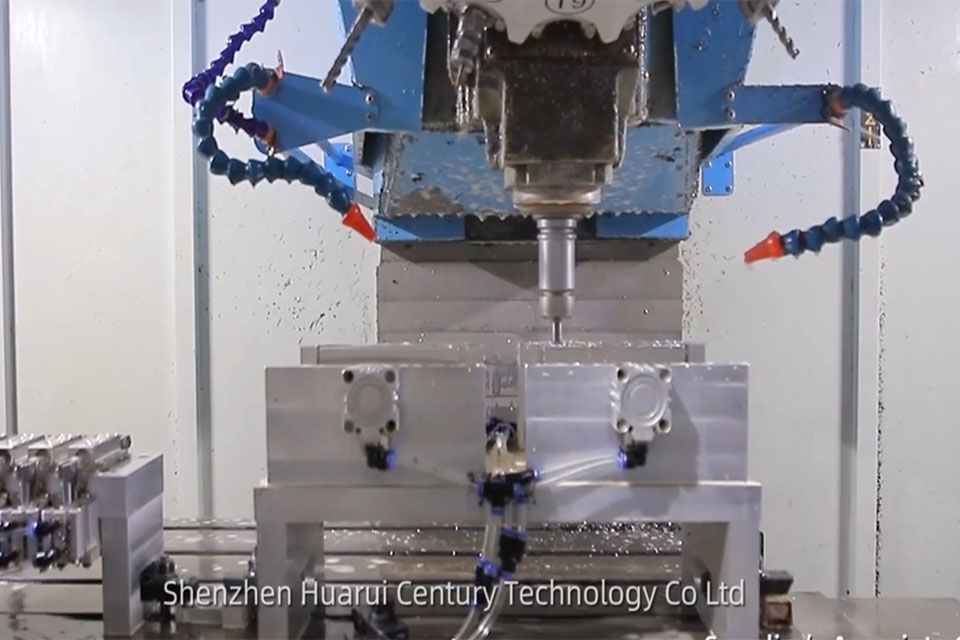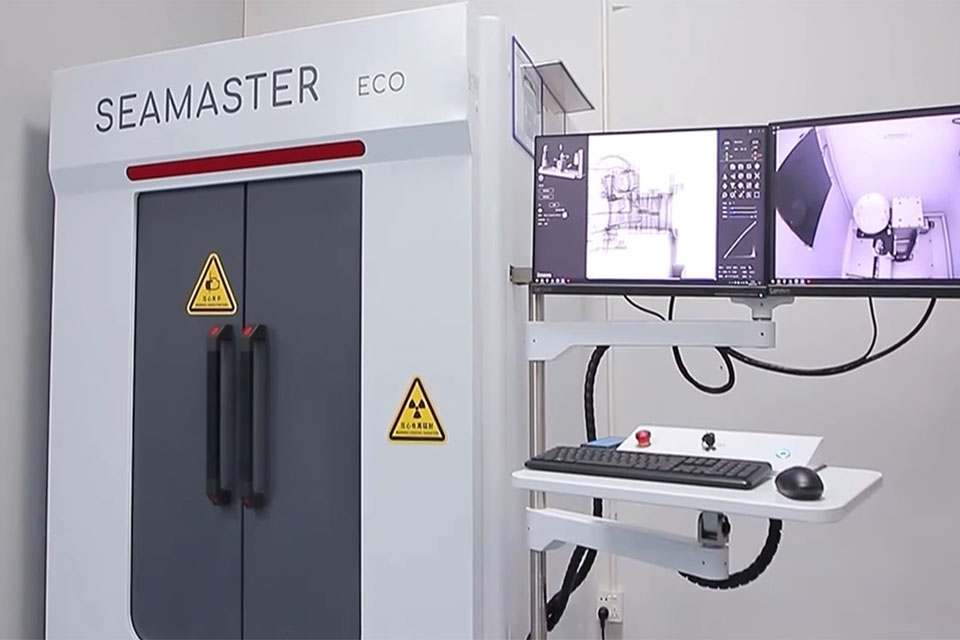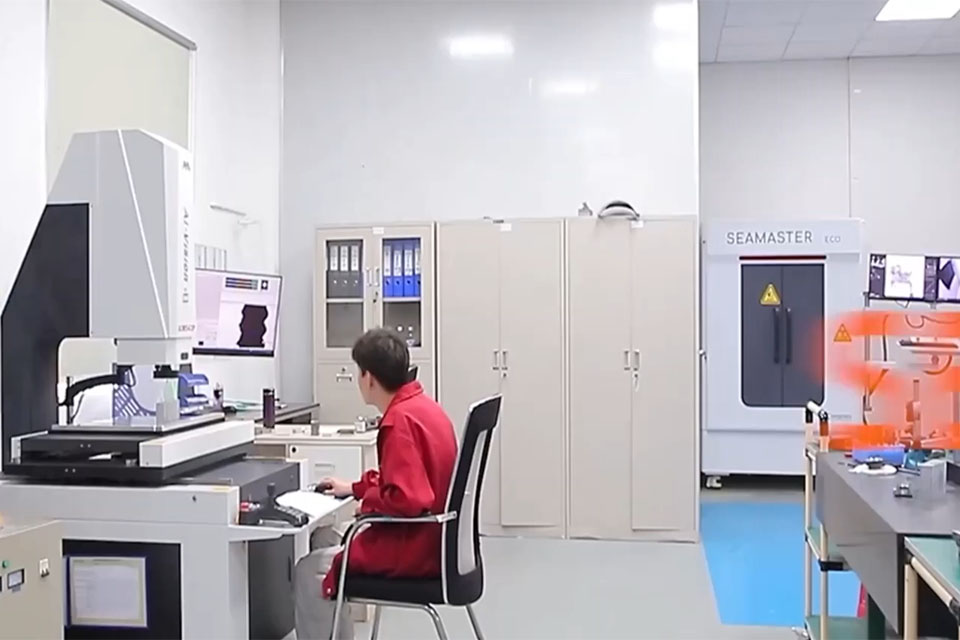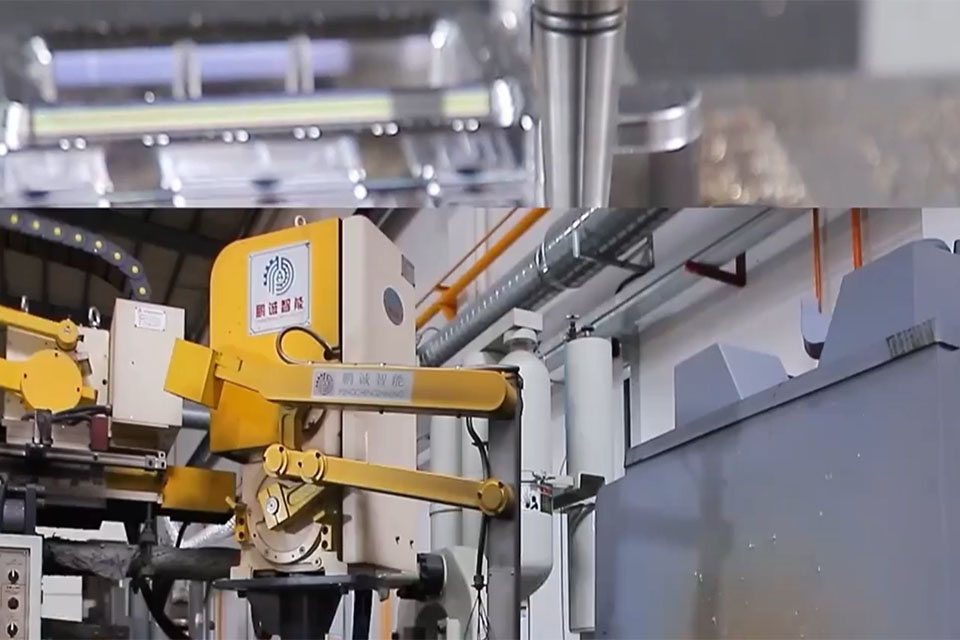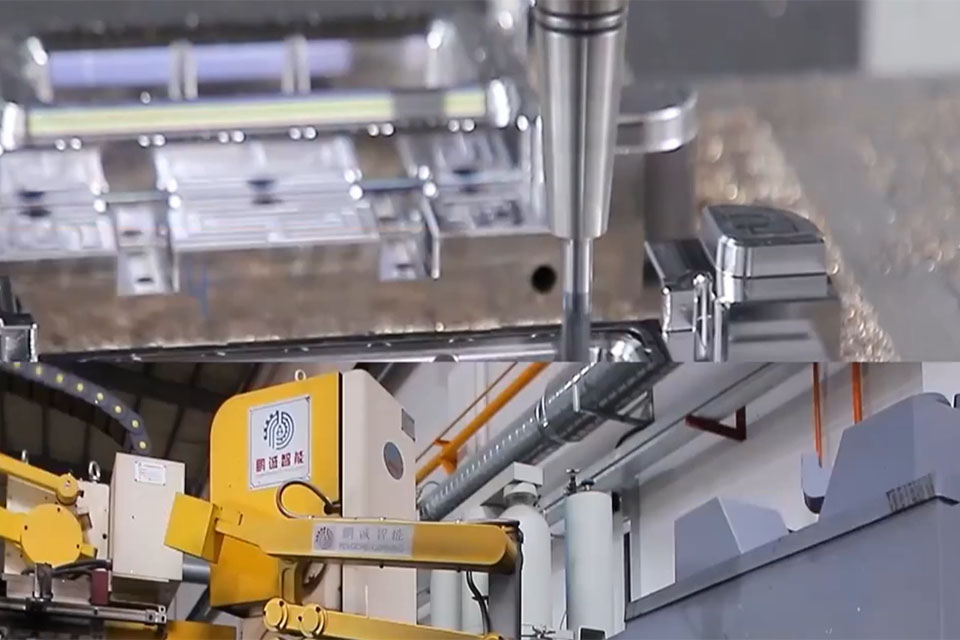Why CNC Machining Parameters are Crucial for Your Success
Machining parameters are the settings that control the cutting conditions during the CNC machining process. Think of them like the ingredients and instructions in a recipe. Just as the right ingredients and cooking methods determine the taste and quality of a dish, the correct machining parameters determine the quality, precision, and efficiency of your manufactured parts.
Incorrect parameters can lead to:
- Poor Surface Finish: Rough or uneven surfaces requiring additional finishing.
- Shortened Tool Life: Increased tool wear and frequent replacements.
- Increased Production Costs: More material waste, longer machining times, and higher energy consumption.
- Reduced Productivity: Inefficient processes and potential rework.
- Damage on tools and even worse your workpiece
By mastering these parameters, you can achieve:
- Kivételes pontosság: Meeting tight tolerances and design specifications.
- Extended Tool Life: Reducing tooling costs and downtime.
- Optimized Production: Faster turnaround times and increased throughput.
- Kiváló minőség: Consistent, high-quality parts that meet your exact requirements.
- Cost savings.
Key CNC Machining Parameters Explained
Let’s explore the essential CNC machining parameters and how they impact your manufacturing process.
Cutting Speed (Surface Speed)
Cutting speed is the speed at which the cutting tool moves across the surface of the material. It’s like the speed of a car on a highway. It’s measured in feet per minute (FPM) or meters per minute (MPM).
- Too High: Can cause excessive heat, leading to tool wear or damage, like driving a car too fast can overheat the engine.
- Too Low: Results in inefficient machining and poor surface quality, similar to driving too slowly on a highway and holding up traffic.
Calculating Cutting Speed (Cs):
Cs = π × d × n
Hol:
- π = constant (approximately 3.14)
- d = workpiece diameter (or tool diameter, depending on the operation)
- n = Engine Rotation Speed (RPM)

Orsó fordulatszám (RPM)
Spindle speed is the rotational speed of the cutting tool (or the workpiece in turning operations). It’s measured in revolutions per minute (RPM). It’s like the speed at which a drill bit spins.
- Higher RPM for Softer Materials like Alumínium.
- Lower RPM for Harder Materials.
Calculating Spindle Speed (n):
n = (Cs × 1000) / (π × d)
Hol:
- Cs = Cutting speed (m/min)
- d = Diameter of the workpiece or tool (mm)
- π = constant (approximately 3.14)
Táplálási sebesség
Feed rate is the distance the cutting tool travels during one revolution of the spindle (or workpiece). It’s measured in inches per minute (IPM) or millimeters per minute (MM/min). Think of it as how quickly you feed wood into a saw.
- Too High: Can cause tool breakage and damage to the workpiece, like forcing wood into a saw too quickly.
- Too Low: Leads to inefficient machining and increased production time, like feeding wood too slowly.
Calculating Feed Rate (F):
F = f × n
Hol:
- f = Tool shift per revolution (mm/turn or inch/turn)
- n = Spindle speed (RPM)
Vágási mélység
Depth of cut is the thickness of the material removed by the cutting tool in a single pass. It’s measured in millimeters or inches. It’s like how deep a plow digs into the soil.
- Deeper Cuts: Faster material removal but higher stress on the tool. Suitable for softer materials.
- Shallower Cuts: Slower material removal but better precision and surface finish. Better for harder materials.
There’s no single formula, but here are some general guidelines:
- Soft Materials (e.g., Aluminum): 1-2 mm (0.04-0.08 inches)
- Hard Materials (e.g., Steel): 0.5-1 mm (0.02-0.04 inches)
Surface Feet per Minute (SFM)
SFM is another way to express cutting speed, specifically at the point where the tool contacts the workpiece. It’s vital for efficiency and surface quality.
Calculating SFM:
SFM = (π × D × RPM) / 12
Hol:
- π = constant (approximately 3.14)
- D = Diameter of the workpiece (inches)
- RPM = Spindle speed
Depth per Pass
This is very similar to the depth of cut, but it specifically refers to each individual pass the tool makes. Keeping this consistent helps ensure even material removal.
Plunge Rate
Plunge rate is how fast the tool moves down into the material, especially important for drilling or pocketing operations. It’s also measured in IPM or MM/min.
Calculating Plunge Rate:
Plunge Rate = Feed per Tooth × Number of Flutes × Spindle Speed
Chip Load
Chip load is the thickness of the material removed by each cutting edge of the tool during one revolution. It’s a key factor in tool life and surface finish. Proper chip load prevents:
- Tool Rubbing: Insufficient chip load causes the tool to rub instead of cut, generating heat and wear.
- Recutting Chips: Chips aren’t cleared properly, leading to poor finish and potential tool damage.

Tool Diameter and Length
The size of your cutting tool significantly impacts the machining process.
- Larger Diameter: More rigid, allows for higher material removal rates, but less suitable for fine details. We offer Precíziós megmunkálás for intricate parts.
- Smaller Diameter: Ideal for precision work, but requires slower speeds and feeds.
- Shorter Length: More rigid, less prone to deflection (bending).
- Longer Length: Greater reach, but more susceptible to deflection.
Cutting Tool Path
The tool path is the route the cutting tool takes to remove material. Efficient tool paths are critical for:
- Minimizing Machining Time: Reducing unnecessary movements.
- Improving Surface Finish: Consistent cutting conditions.
- Avoiding Collisions: Preventing damage to the tool, workpiece, or machine.
We use advanced CAM software to optimize tool paths for our CNC megmunkálás szolgáltatások.
Understanding Wall Thickness in CNC Machining
Wall thickness, the minimum thickness of a part’s walls, is a crucial design consideration.
- Too Thin: Can lead to warping, flexing, or even failure during machining.
- Too Thick: Increases material cost and machining time unnecessarily.
The ideal wall thickness depends on:
- Anyag: Stronger materials can have thinner walls.
- Tervezés: Complex shapes may require thicker walls for support.
- Megmunkálási folyamat: 5 tengelyes CNC megmunkálás can allow for more intricate designs with varying wall thicknesses.

Step-by-Step Guide to Setting CNC Machine Parameters
Here’s a straightforward process for setting your CNC machine parameters:
- Start the Machine: Power on your CNC machine and let it run its initial checks.
- Choose Your Tool: Pick the right cutting tool for the material and job.
- Secure Your Material: Firmly clamp your workpiece to the machine bed.
- Tell the Machine About Your Material: Input the material type into the CNC control system.
- Set the Key Parameters:
- Spindle Speed (RPM): How fast the tool spins.
- Feed Rate (IPM/MM/min): How fast the tool moves through the material.
- Plunge Rate (IPM/MM/min): How fast the tool moves down into the material.
- Vágási mélység: How much material is removed in one pass.
- Create the Cutting Path: Use CAD/CAM software to design your part and generate the G-code (the instructions for the machine).
- Load the G-code: Transfer the G-code to your CNC machine.
- Set Tool Offset: Measure the tool length and enter the offset into the control system.
- Test Run: Do a dry run (without cutting material) to check the tool path.
- Start Cutting: Begin the machining operation and monitor it closely.
- Coolant (If Needed): Adjust the coolant flow to keep the tool and workpiece cool.
Recommended CNC Parameters for Different Materials
The table below provides starting point recommendations. Always consult tooling manufacturer data for precise values.
| Anyag | Orsó fordulatszám (RPM) | Cutting Speed (ft/min) | Feed Rate (IPT) | Depth of Cut (inches) | Megjegyzések |
|---|
| Alumínium | 3000-6000 | 600-1000 | 0.002-0.005 | 0.04-0.10 | Use sharp tools, good cooling. We specialize in Alumínium extrudálás. |
| Acél | 1500-3000 | 100-400 | 0.001-0.004 | 0.02-0.08 | Use robust tools (HSS or carbide). |
| Rozsdamentes acél | 1000-2000 | 50-150 | 0.001-0.003 | 0.01-0.05 | Tough material, use coated tools. |
| Titánium | 500-1500 | 30-100 | 0.0005-0.002 | 0.01-0.04 | Very difficult to machine, requires careful control. |
| Softwood/Plywood | 10,000-18,000 | 800-1200 (m/min) | 0.004-0.006 | 0.10-0.25 | |
| Keményfa | 8000-12,000 | 600-1000 (m/min) | 0.003-0.005 | 0.08-0.20 | |
| Akril | 10,000-16,000 | 100-300 (m/min) | 0.002-0.004 | 0.02-0.10 | High speed, low feed, good cooling to prevent melting. |
| Polikarbonát | 8000-12,000 | 150-400 (m/min) | 0.002-0.005 | 0.02-0.08 | Control heat to prevent deformation. |
| PVC | 8000-14,000 | 200-500 (m/min) | 0.002-0.004 | 0.02-0.06 | |
| Kompozitok | 12,000-18,000 | 100-300 (m/min) | 0.001-0.004 | 0.01-0.08 | Requires specialized tooling and techniques. We offer expertise in machining composites for various industries, including Repülőgépipar. |
| Superalloys | 1000-4000 | 30-60(m/min) | 0.001-0.003 | 0.01-0.05 | Require lower spindle speeds and cutting speeds |
| Kerámia | 8000-16,000 | 100-200(m/min) | 0.002-0.004 | 0.005-0.02 | Ceramics require high spindle speeds and low feed rates |
| High-Performance Polymers | 6000-12,000 | 150-400(m/min) | 0.002-0.006 | 0.01-0.05 | Parameters for high-performance polymers |
How Cutting Tool Selection Impacts CNC Parameters
The cutting tool you choose is directly linked to the parameters you set. Here’s what to consider:
- Tool Material: High-speed steel (HSS) is versatile, carbide is harder and more wear-resistant, and ceramics are for extremely hard materials.
- Szerszámgeometria: The shape and number of cutting edges (flutes) affect feed rate and finish.
- Material Being Cut: Match the tool to the material’s hardness and properties.
- Orsó fordulatszám: Softer materials need higher RPMs; harder materials need lower RPMs.
- Vágási sebesség: Match the cutting speed to the tool and material for optimal performance.
- Táplálási sebesség: Adjust based on the tool and material to prevent breakage or poor finish.
- Vágási mélység: Consider the tool’s strength and the material’s hardness.

Best Practices for Optimizing CNC Parameters
Here’s how to fine-tune your CNC parameters for the best results:
- Choose the Right Mill Bit Diameter: Larger diameters remove material faster but need more power.
- Consider the Number of Cutting Edges: More flutes = higher feed rates, fewer flutes = better for roughing.
- Pick the Right Mill Bit Shape: Flat, ball-nose, or V-shaped, depending on the job.
- Know Your Material: Adjust parameters based on its hardness and properties.
- Aim for the Right Surface Finish: Lower feed rate and depth of cut for smoother finishes.
- Prioritize Accuracy: Fine-tune feed rate, spindle speed, and depth of cut.
- Understand Your CNC Machine: Consider its power and rigidity.
Recognizing When to Adjust CNC Machining Parameters
Here are some telltale signs that your parameters need adjustment:
- Dull Cutters: The tool isn’t cutting efficiently.
- Dust Instead of Chips: The feed rate or depth of cut might be too low.
- Unusual Noises: Squealing, chattering, or grinding.
- Overheating: The tool or material is getting too hot.
- Bad Finish: Rough or uneven surface.
- Excessive Vibrations: Can lead to poor finish and tool wear.
- Broken Cutters: Parameters are too aggressive.
- Wear or Burns: Visible damage to the tool or workpiece.
How Parameters Impact the Overall Cost of Machining
Correctly setting your parameters can significantly reduce your manufacturing costs:
- Longer Tool Life: Proper settings reduce tool wear and replacement frequency.
- Less Material Waste: Fewer mistakes and rejected parts.
- Faster Machining Time: Optimized feed rates and cutting speeds increase productivity.
- Lower Energy Consumption: Efficient settings reduce power usage.
- Better Surface Finish: Less need for post-processing.
- A On Demand gyártás services help you optimize costs further.
GYIK
What if I’m unsure about the right parameters for my material?
Start with conservative settings (lower speeds and feeds) and gradually increase them while monitoring the process. Consult tooling manufacturer data and material guides.
How often should I check my CNC machine parameters?
Regularly check parameters, especially when changing materials, tools, or job types.
What’s the difference between cutting speed and spindle speed?
Cutting speed is the speed of the tool across the material’s surface. Spindle speed is the rotational speed of the tool (or workpiece).
Can I use the same parameters for different CNC machines?
Not necessarily. Machine capabilities (power, rigidity) vary, so parameters may need adjustment.
What role does coolant play in parameter optimization?
Coolant reduces heat, extends tool life, and improves surface finish. Proper coolant flow is crucial, especially with harder materials. We offer a variety of Felületkezelés options to enhance your parts.
Where can I get help with complex CNC machining projects?
Contact us! As a CNC Manufacturing Service and Product Manufacturing Factory, we have the expertise and equipment to handle projects across various industries, including Orvostechnikai eszközök, Elektronika, Védelem és katonaság, and more. We also offer Gyors prototípusgyártás szolgáltatások.
Következtetés: A legfontosabb tanulságok
- CNC machining parameters are the key settings that control the cutting process.
- Correct parameters are essential for precision, efficiency, tool life, and cost-effectiveness.
- Key parameters include cutting speed, spindle speed, feed rate, depth of cut, and tool path.
- Parameters vary depending on the material being machined.
- Regularly monitor the machining process and adjust parameters as needed.
- Optimizing parameters can significantly reduce manufacturing costs.
- Use active voice more than passive voice, which will bring a stronger and more reader-friendly article
By understanding and applying these principles, you can achieve superior results in your CNC machining operations. We are here to help you every step of the way, from prototype to production. Contact us today to discuss your project!

